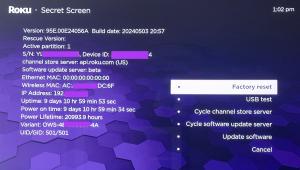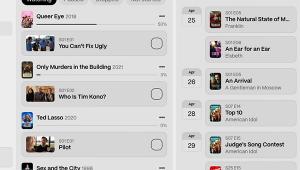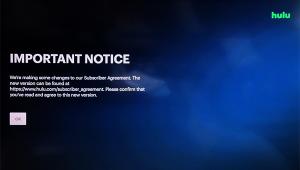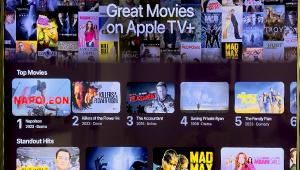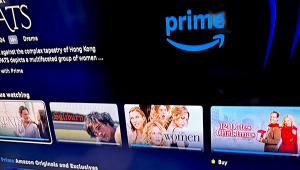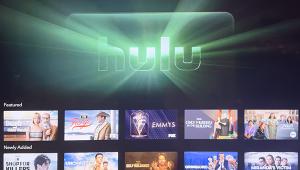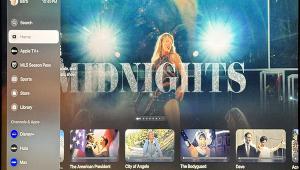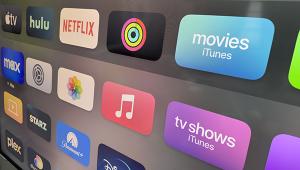I like my Roku Ultra a lot. But I wish the remote didn't have the extra buttons, the old one is much nicer (and still works with Ultra box).
Hands-On: Roku Express 4K+ and Voice Remote Pro

Roku Express 4K+
Now that most TVs sold are at least 4K and many can display HDR, it was time for Roku to release an inexpensive player for the average consumer or a streaming device for a second TV. At $40, it is one of the least expensive 4K HDR streamers in the market. There's almost no difference between it and the Roku Streaming Stick + (which is on sale now for $40). The Roku Streaming Stick + HE will undoubtedly replace the Streaming Stick. It's priced at $10 more than the Express 4k+ and includes the voice remote with a headphone jack.
While the Streaming Stick + is a smaller stick dongle, the Roku Express 4K+ is about twice the width. While larger, it is still small enough to be portable and take it when you travel. Roku's dorm and hotel connect feature supports taking it with you. The Streaming Stick + connects directly to an HDMI port, but the Express 4K+ requires an HDMI cable (included with the device). It also comes with a USB mini cable for power and a wall adapter.
Given the length of the USB cable, it's good that I could plug it into my 2020 TCL Roku TV 's USB port as it would have been too short to reach a wall power socket. The included HDMI cable was also very short. To keep the Express 4K+ close to the TV's connections, Roku comes with a piece of removable tape to stick it to the edge of your TV. The quick start guide recommends that you don't attach it to the back of the TV as it could overheat. That's unfortunate because it would be the perfect place to hide the Express 4K+ as it no longer needs line-of-site for its included voice remote.
The voice remote is a bonus for a value player. As with all Roku remotes, there are four direct channel (app) buttons. Three take you to the same channels found on most recent Roku remotes— Netflix, Hulu, Disney + —the fourth is a new button for Apple TV+.
Any app can be opened quickly by pressing the microphone button and using the voice command, "Launch Netflix (or another channel)." The 4K+ remote voice features worked flawlessly. Voice search brought up results from various channels. Still, you can't search for a title within a channel. When I was in the Netflix app, I looked for The Kaminsky Method. Instead of showing me the title in Netflix, the player took me out of the app to display all results. It wasn't much of an issue as it was fast to choose the Netflix result and return to the show within the channel.
From the home screen or while watching another channel, when asked to watch a show on a specific channel, "Watch Handmaid's Tale on Hulu," it launched quickly and started the show playing. Controlling playback using the microphone/voice button and saying a playback control command was accurate. I preferred to use voice rather than buttons to pause, play, rewind, exit and go home. At times a request to fast forward as much as 30 minutes was almost instant. Other times, I waited for a count of five. The alacrity of the response was impressive for a value-priced player. It may have appeared fast to move to the desired time, had I not recently been testing the comparatively more powerful (and expensive) Apple TV.
The Roku Express 4K+ only drawback is that it is missing some audio and video formats. While it has HDR10, and HDR10+, it lacks Dolby Vision support. Likewise, it has Dolby 5.1 and can pass-through Dolby Atmos, but the latter capability is limited to specific apps. If your system is capable of these quality audio or video formats, you might opt for the Roku Ultra or another player as your primary streaming device.
Roku Voice Remote Pro
The Roku Voice Remote Pro can be paired with the Roku Express 4K+. It was fast, responsive, could control my TV, and the voice could be used hands-free. However, my preference was to use the remote with my Roku TV because it offered more hands-free voice commands.
The remote has two programmable shortcut buttons that can be programmed with any voice command. I programmed the first button to switch to my DISH satellite input. A quick press saved me from going to the home screen and navigating to the Satellite icon. As the buttons can be re-programmed, and I am currently binge-watching Frasier before falling asleep, I programmed one button to "Play Frasier on Hulu." It starts playing within a few seconds and saves me from having to navigate through the menus.
Still, it would have been easier to simply speak the command. I could have said, "Hey Roku, play Frasier on Hulu." The remote has far-field microphones, like an Echo or Google speaker, and can accept a command from across a (small) room. It was noisy, or I was speaking too softly a couple of times, so the remote didn't "hear" me. However, it had no problem hearing me when I asked, "Hey Roku, where's my remote?" The remote started dinging from beneath the newspaper on the coffee table. A switch on the side of the remote can be used to turn off the always-listening microphones, (so you don't feel like everything you say is being recorded). With the switch turned off, you can still use voice commands by pressing the microphone button.
Voice commands include playback—play, pause, resume, stop, fast forward or rewind a specific amount of time, start over, replay, skip, and next. You can launch channels. If there are profiles when the channel opens, you can say "Hey Roku, OK" to choose the highlighted profile. Voice commands cannot be used to navigate onscreen menus. The Roku remote responds to volume up/down, turning on/off closed captions, turn on closed captions during replay or mute, and do a voice search. If a title is only available on one channel to which you are subscribed, the show will start to play rather instantly rather than displaying results.
Additional commands for using the remote with a Roku TV include: switching inputs, changing over-the-air broadcast channels, and launching or hiding the Live TV channel guide.
The Voice Remote Pro has a side headphone jack and comes with earbuds, but I recommend upgrading to better headphones for a more satisfactory experience. Although it felt like overkill to connect the Sennheiser IE900 in-ear monitors, these earbuds enhanced the sound immensely. I watched Avengers: Endgame on Disney+. The dialog and sound effects were immersive, and with these high-end in-ears, every footstep, crumpled paper, and air blowing from a fan was distinct. What's more, now that I open my windows in the warm weather, I can crank up the volume on an action film without my neighbors having to listen to my late-night Marvel addiction. The Roku Voice Remote Pro runs $30 and can replace the remote on most Roku TVs, soundbars, and recent players.
As I switch between sitting in an armchair and the sofa and don't always move the remote, the Roku Remote Pro's hands-free commands are a game-changer for me. I'm also excited that I won't have to change batteries as the remote is rechargeable via micro USB. Surprisingly, I expect to use the headphone jack regularly.
With a new budget 4K HDR small player and a hands-free voice remote, Roku clearly is giving their customers, and potential users, what they want.
- Log in or register to post comments


